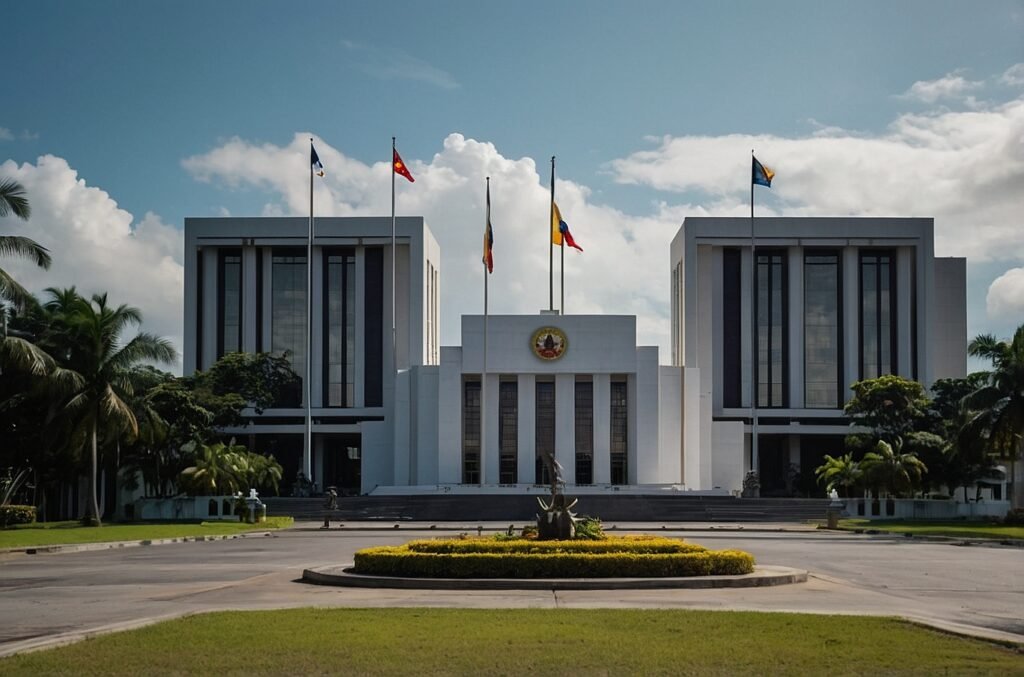Kundiman, a quintessential form of Filipino music, stands as a testament to the rich cultural heritage of the Philippines. This traditional art form, deeply rooted in the nation’s history, emerged as a powerful medium of expression during the Spanish colonial era. Kundiman songs, characterized by their poignant melodies and heartfelt lyrics, have long been revered as the epitome of Filipino romantic music. These compositions, often likened to serenades, serve as more than mere love songs; they embody the Filipino spirit, reflecting the country’s struggles, hopes, and unwavering resilience. As we delve into the world of Kundiman, we will explore its origins, musical characteristics, cultural significance, and enduring legacy in Filipino society.
Historical Origins of Kundiman
The origins of Kundiman can be traced back to the late 19th century, during the Spanish colonial period in the Philippines. This era, marked by oppression and cultural suppression, gave birth to various forms of artistic expression that allowed Filipinos to voice their sentiments covertly. Kundiman emerged as one such medium, initially serving as a vehicle for expressing love not just for a person, but for one’s country as well.
Etymology and Early Development
The term “Kundiman” is believed to have originated from the Tagalog phrase “kung hindi man” meaning “if it were not so” or “although it is not so.” This phrase encapsulates the sense of longing and unrequited love often portrayed in these songs. Early Kundiman compositions were typically performed in rural areas, where they gradually evolved from simple folk melodies into more complex musical pieces.
Influence of Spanish Music
The development of Kundiman was significantly influenced by Spanish musical traditions, particularly the habanera rhythm. This influence is evident in the melodic structure and harmonic progressions of many Kundiman songs. However, Filipino composers ingeniously integrated these foreign elements with indigenous musical styles, creating a unique art form that was distinctly Filipino in character.
Transition from Oral Tradition to Written Music
Initially transmitted through oral tradition, Kundiman began to be transcribed into written form in the early 20th century. This transition marked a significant milestone in the genre’s evolution, allowing for greater preservation and dissemination of these musical works. Composers like Francisco Santiago and Nicanor Abelardo played pivotal roles in elevating Kundiman to a more sophisticated art form, introducing complex harmonies and orchestral arrangements.
Musical Characteristics of Kundiman
Kundiman possesses distinct musical characteristics that set it apart from other Filipino musical genres. Understanding these elements is crucial to appreciating the depth and beauty of this traditional art form.
Melodic Structure
The melody of a Kundiman typically follows a specific pattern:
- It begins in a minor key, reflecting a sense of longing or sadness.
- As the song progresses, it modulates to its relative major key, symbolizing hope or the triumph of love.
- The piece often concludes by returning to the minor key, creating a cyclical structure that mirrors the complexities of love and life.
Rhythmic Elements
Kundiman is traditionally written in triple meter, most commonly in 3/4 time. This waltz-like rhythm contributes to the song’s flowing, romantic quality. The tempo is generally moderate, allowing for expressive interpretation by the performer.
Harmonic Progression
The harmonic structure of Kundiman is relatively simple yet effective. It typically employs basic chord progressions that support the emotional arc of the melody. The shift from minor to major tonality is a key feature, often coinciding with a change in the song’s emotional intensity.
Vocal Technique
Kundiman requires a specific vocal technique characterized by:
- Smooth legato phrasing
- Controlled vibrato
- Clear diction for conveying the lyrics
- Emotional expressiveness
Instrumental Accompaniment
While originally performed with simple guitar accompaniment, Kundiman evolved to incorporate various instrumental arrangements. Common accompaniments include:
- Piano
- String ensembles
- Full orchestras (in more elaborate compositions)
Lyrical Themes and Poetic Devices
The lyrics of Kundiman songs are as integral to the genre as their musical elements. These poetic texts often explore themes of love, patriotism, and social issues, employing various literary devices to convey deep emotions and cultural values.
Predominant Themes
- Romantic Love: Many Kundiman songs express the joys and sorrows of romantic relationships, often featuring unrequited love or the pain of separation.
- Patriotism: Some Kundiman compositions use romantic language as a metaphor for love of country, especially during times of political oppression.
- Nature: Filipino natural landscapes and elements often serve as backdrops or metaphors in Kundiman lyrics.
- Social Commentary: Later Kundiman works sometimes incorporated subtle critiques of social and political issues.
Poetic Devices and Techniques
Kundiman lyrics employ various poetic devices to enhance their emotional impact:
- Metaphor and Simile: Natural elements are often used to represent human emotions or experiences.
- Personification: Abstract concepts like love or country are frequently personified.
- Alliteration and Assonance: These techniques create musicality within the lyrics themselves.
- Symbolism: Certain objects or phenomena are used to represent deeper meanings or emotions.
Language and Dialect
While many Kundiman songs are written in Tagalog, the national language of the Philippines, compositions in other Filipino languages and dialects also exist. This linguistic diversity reflects the rich cultural tapestry of the Philippine archipelago.
Cultural Significance of Kundiman
Kundiman holds a special place in Filipino culture, transcending its role as a musical genre to become a symbol of national identity and artistic expression. Its significance extends beyond the realm of entertainment, influencing various aspects of Filipino society and cultural development.
Preservation of Filipino Identity
During the Spanish colonial period and subsequent American occupation, Kundiman served as a means of preserving Filipino identity. By blending indigenous musical elements with foreign influences, it created a uniquely Filipino art form that resonated with the people’s experiences and aspirations.
Educational Value
Kundiman plays a crucial role in music education in the Philippines. It is often taught in schools as part of the curriculum on Filipino culture and arts. This educational focus helps to:
- Instill appreciation for traditional Filipino music among younger generations
- Preserve the technical skills required for Kundiman performance
- Foster a sense of cultural pride and continuity
Influence on Modern Filipino Music
The impact of Kundiman extends to contemporary Filipino music. Many modern Filipino composers and performers draw inspiration from Kundiman, incorporating its melodic structures, themes, and emotional depth into their work. This ongoing influence ensures that the spirit of Kundiman continues to evolve and remain relevant in the modern musical landscape.
Cultural Diplomacy
Kundiman has also served as a tool for cultural diplomacy. Performances of Kundiman songs in international settings have helped to:
- Showcase Filipino musical heritage to global audiences
- Foster cultural exchange and understanding
- Promote the Philippines as a nation with a rich artistic tradition
Notable Kundiman Composers and Performers
Throughout its history, Kundiman has been shaped by talented composers and performers who have contributed to its development and popularization. Here are some of the most influential figures in the genre:
Pioneering Composers
- Francisco Santiago (1889-1947)
- Known as the “Father of Kundiman Art Song”
- Famous works: “Kundiman (Anak-Dalita)”, “Madaling Araw”
- Nicanor Abelardo (1893-1934)
- Elevated Kundiman to new heights of musical sophistication
- Notable compositions: “Mutya ng Pasig”, “Nasaan Ka Irog”
- Antonio Molina (1894-1980)
- Integrated elements of Western classical music into Kundiman
- Renowned work: “Hatinggabi”
Influential Performers
- Atang dela Rama (1902-1991)
- First female recipient of the National Artist of the Philippines award
- Known for her emotive interpretations of Kundiman songs
- Sylvia La Torre (1933-2022)
- Dubbed the “Queen of Kundiman”
- Popularized Kundiman through radio and television performances
- Ruben Tagalog (1922-1985)
- Renowned for his rich baritone voice and expressive renditions of Kundiman
Contemporary Artists
Several modern Filipino artists continue to perform and reinterpret Kundiman, ensuring its relevance in contemporary music:
- Ryan Cayabyab
- Noel Cabangon
- Joanna Ampil
These artists blend traditional Kundiman elements with modern musical styles, introducing the genre to new generations of listeners.
Evolution of Kundiman Through the Years
The journey of Kundiman from its origins to the present day reflects the changing social, political, and cultural landscape of the Philippines. This evolution can be broadly categorized into several distinct phases:
Early Period (Late 19th – Early 20th Century)
- Characterized by simple melodies and folk-inspired lyrics
- Often performed in rural settings with minimal instrumentation
- Themes primarily focused on romantic love and nature
Golden Age (1920s – 1940s)
- Marked by the emergence of formally trained composers
- Integration of Western classical music elements
- Expansion of themes to include subtle patriotic messages
- Increased complexity in musical arrangements
Post-War Era (1950s – 1970s)
- Incorporation of Kundiman into mainstream popular music
- Adaptation for radio and film soundtracks
- Fusion with other genres like jazz and bossa nova
Contemporary Period (1980s – Present)
- Revival of interest in traditional Kundiman forms
- Reinterpretation by modern artists and composers
- Integration of Kundiman elements into various music genres
- Use of technology in composition and performance
To illustrate this evolution, here’s a table summarizing the key changes in Kundiman over time:
| Period | Musical Characteristics | Thematic Focus | Performance Context |
|---|---|---|---|
| Early Period | Simple melodies, folk-inspired | Romantic love, nature | Rural settings, informal gatherings |
| Golden Age | Complex harmonies, orchestral arrangements | Love, subtle patriotism | Concert halls, formal performances |
| Post-War Era | Fusion with popular music styles | Diverse themes, including social issues | Radio, film, television |
| Contemporary | Blend of traditional and modern elements | Varied, including cultural identity | Multiple platforms, including digital media |
Kundiman in Popular Culture and Media
The influence of Kundiman extends beyond traditional musical settings, permeating various aspects of Filipino popular culture and media. This widespread presence has played a crucial role in maintaining the genre’s relevance and introducing it to new audiences.
Film and Television
Kundiman has been a staple in Filipino cinema and television, often used to:
- Set the mood for romantic or nostalgic scenes
- Provide cultural context in historical dramas
- Serve as central themes in music-focused productions
Notable examples include the use of Kundiman in classic Filipino films like “Ibong Adarna” (1941) and more recent productions such as “Ang Larawan” (2017), which prominently featured Kundiman-inspired music.
Radio and Recordings
The advent of radio broadcasting and recording technology in the mid-20th century significantly boosted the popularity of Kundiman. Key developments include:
- Regular Kundiman programs on national radio stations
- Commercial recordings of Kundiman performances, making them accessible to a wider audience
- Compilation albums featuring both classic and contemporary interpretations of Kundiman songs
Digital Media and Streaming Platforms
In the digital age, Kundiman has found new avenues for distribution and appreciation:
- Availability of Kundiman recordings on major streaming platforms
- YouTube channels dedicated to Kundiman performances and tutorials
- Social media campaigns promoting Kundiman awareness among younger generations
Cultural Events and Festivals
Kundiman continues to play a significant role in various cultural events and festivals across the Philippines:
- Annual Kundiman competitions and concerts
- Inclusion in music festivals celebrating Filipino heritage
- Integration into cultural programs for national holidays and commemorations
Kundiman in Music Education
The importance of Kundiman in preserving Filipino musical heritage has led to its incorporation into formal music education programs. This integration serves multiple purposes, including cultural preservation, musical skill development, and fostering national identity.
Curriculum Integration
Kundiman is typically included in music education curricula at various levels:
- Primary Education:
- Introduction to basic Kundiman melodies and rhythms
- Learning simple Kundiman songs as part of cultural studies
- Secondary Education:
- More in-depth study of Kundiman history and musical characteristics
- Performance of Kundiman pieces in school choirs and music classes
- Tertiary Education:
- Advanced analysis of Kundiman compositions
- Study of Kundiman in the context of Filipino music history
- Performance and composition of Kundiman in conservatories and music programs
Teaching Methodologies
Educators employ various methods to teach Kundiman effectively:
- Historical context lessons to understand the genre’s significance
- Vocal technique workshops focusing on Kundiman’s unique performance style
- Comparative analysis with other Filipino and international music genres
- Composition exercises encouraging students to create Kundiman-inspired pieces
Challenges and Opportunities
While Kundiman education faces challenges such as competition from modern music genres and limited resources, it also presents opportunities:
- Preservation of traditional Filipino musical forms
- Development of culturally rooted musical skills
- Enhancement of students’ understanding of Filipino history and culture through music
The Global Reach of Kundiman
While Kundiman is deeply rooted in Filipino culture, its influence and appreciation have extended beyond national borders. This global reach has been facilitated by various factors, including diaspora communities, cultural exchange programs, and international music collaborations.
Kundiman in Filipino Diaspora Communities
Filipino communities around the world have played a crucial role in introducing Kundiman to international audiences:
- Cultural events and festivals organized by Filipino associations abroad often feature Kundiman performances
- Diaspora artists incorporate Kundiman elements into their work, creating fusion styles that appeal to diverse audiences
- Community music groups and choirs in countries with significant Filipino populations often include Kundiman in their repertoire
International Music Collaborations
Collaborations between Filipino and international artists have helped to bring Kundiman to global attention:
- Cross-cultural music projects featuring Kundiman alongside other world music genres
- International music festivals showcasing traditional Filipino music, including Kundiman
- Recordings and performances by non-Filipino artists interpreting Kundiman songs
Academic Interest and Research
Kundiman has also garnered interest in academic circles outside the Philippines:
- Ethnomusicology studies focusing on Kundiman as a unique musical form
- Inclusion of Kundiman in world music curricula at international universities
- Research projects exploring the cultural and historical significance of Kundiman
Digital Platforms and Global Accessibility
The digital age has significantly enhanced the global accessibility of Kundiman:
- Streaming platforms making Kundiman recordings available worldwide
- Online tutorials and masterclasses on Kundiman performance techniques
- Social media sharing of Kundiman performances and information, reaching international audiences
The Enduring Legacy of Kundiman
Kundiman, with its rich history and profound cultural significance, continues to play a vital role in Filipino music and identity. From its origins as a covert expression of love and patriotism during colonial times to its current status as a revered art form, Kundiman has demonstrated remarkable resilience and adaptability.
The genre’s evolution through various historical periods reflects the changing socio-cultural landscape of the Philippines, while its core elements remain a testament to the enduring Filipino spirit. The integration of Kundiman into educational curricula ensures that new generations will continue to appreciate and preserve this important cultural heritage.
As Kundiman finds new expressions in contemporary music and reaches global audiences, it serves as a powerful ambassador of Filipino culture. The genre’s ability to evoke deep emotions and convey complex themes through its melodic structure and poetic lyrics continues to resonate with listeners, both in the Philippines and around the world.
The future of Kundiman looks promising, with ongoing efforts to preserve traditional forms while encouraging innovative interpretations. As long as there are hearts to be moved by its melodies and voices to carry its songs, Kundiman will remain a vibrant and essential part of Filipino musical tradition, bridging the past, present, and future of Philippine culture.
Disclaimer: This article aims to provide accurate information about Kundiman based on available historical and musical sources. However, as with any historical and cultural topic, there may be varying interpretations and ongoing research that could provide new insights. Readers are encouraged to explore additional resources and consult experts in Filipino music for the most up-to-date information. If you notice any inaccuracies in this article, please report them so we can promptly make corrections and ensure the highest level of accuracy in our content.




